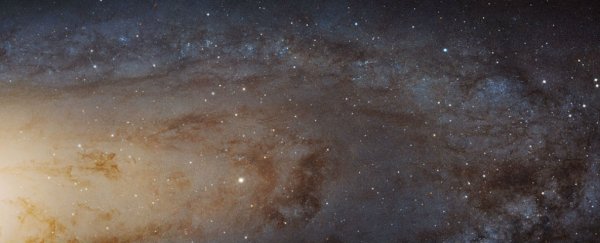Captured using the NASA/ESA Hubble Space Telescope, this is the largest and sharpest image ever taken of the Andromeda galaxy. Well, not the image above, per se, because there's no way our server could hold all those pixels, but if you click through to this zoom tool, you can see it on all its high-resolution, couple-of-billion-pixel glory.
Alt1097 on Reddit said it best when he commented, "What's funny is that when I first looked at the picture, I wasn't impressed with the quality. I thought, 'What's with all the grain?' Turns out that grain I thought I was seeing was actually the detail of millions of individual stars. Really puts things in perspective."
The panorama image was created as part of the Panchromatic Hubble Andromeda Treasury (PHAT) program. The aim of this program is to map large chunks of the star-forming disk of the Andromeda galaxy - also known as M31 - using six different filters that can view the galaxy in ultraviolet, near-ultraviolet, visible, and near infrared wavelengths.
The Advanced Camera for Surveys (ACD) aboard the Hubble Space Telescope allows this disk to be resolved into more than 100 million photographable stars across the space of 40,000 light-years.
According to Cosmos Magazine, the image above - or in this zoom tool - represents about a third of this galaxy, which sits about 2.5 million light-years away from Earth. It's been shown in its natural, visible-light colour, and shot through red and blue filters. "It traces the galaxy from its central galactic bulge on the left of the image, where stars are densely packed together, across lanes of stars and dust to the sparser outskirts of its outer disc on the right," says Cosmos.
While it's awe-inspiring to look at, the primary reason for creating such an image is more practical than that. Astronomers will now use it to compare its patterns of light with those from other galaxies that are similar to Andromeda, but much, much further away, to learn more about them.
Sources: Cosmos Magazine, Reddit
